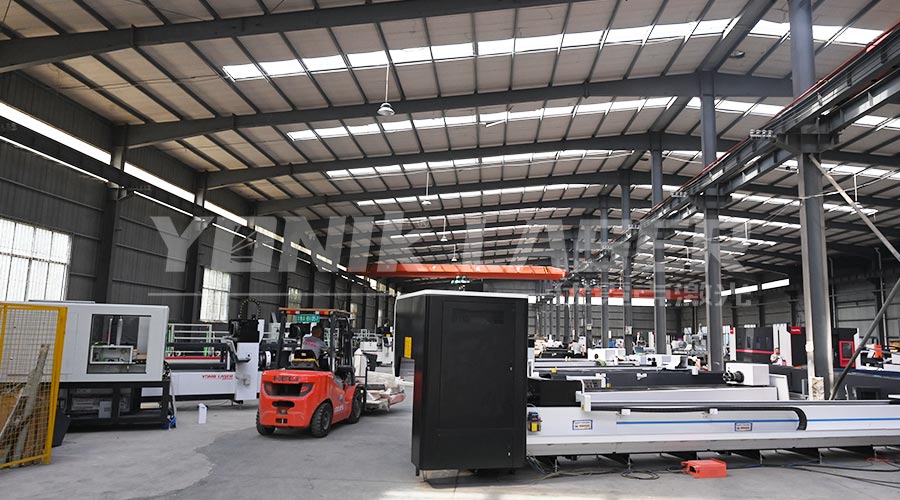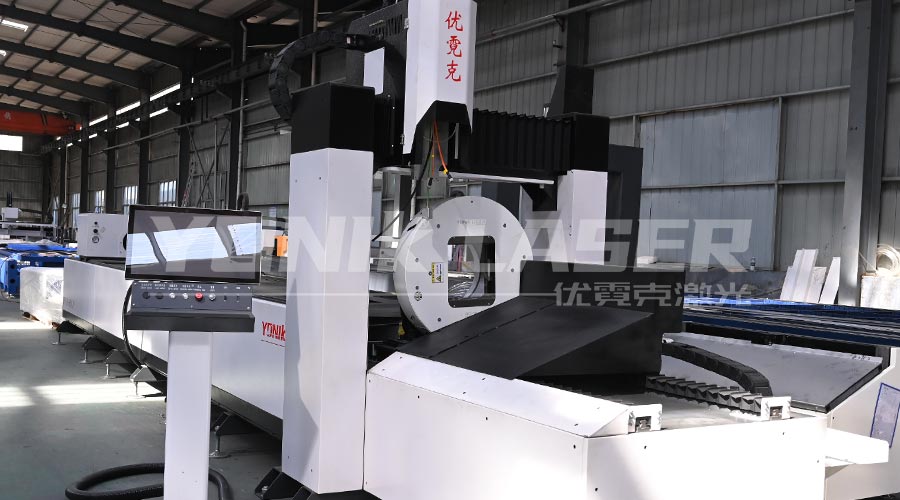In the field of laser cutting, the selection of auxiliary gases is like the "anesthesia plan" in surgery, directly determining the quality of the incision and operating costs. Industry statistics show that incorrect gas selection can lead to a 40% decrease in processing efficiency, a 60% increase in consumable costs, and even cause material performance degradation. This article will reveal the 9 core differences between nitrogen and oxygen, combined with practical parameters of materials such as carbon steel, stainless steel, aluminum alloy, etc., to help you find the best gas selection strategy!

1、 Bottom level logic: Physical game between two gases
1. The principle of "combustion assist" in oxygen cutting
Exothermic reaction: Fe+O ₂ → Fe ∝ O ₄+thermal energy (increases cutting speed by 30-50%)
Typical parameters: When cutting 10mm carbon steel, the oxygen purity should be ≥ 99.95% and the pressure should be 0.8-1.2MPa
Sectional features: Formation of oxide layer, surface roughness Ra 25-50 μ m
2. The "cold cutting" mechanism of nitrogen cutting
Inert protection: isolate oxygen to prevent oxidation, nitrogen purity must be ≥ 99.999%
Typical parameters: When cutting 3mm stainless steel, the pressure is 1.5-2.0MPa
Sectional features: Silver white metallic luster, roughness Ra 10-20 μ m
Key conclusion:
Oxygen=speed priority, suitable for rough machining of structural components
Nitrogen=quality priority, suitable for precision machining of exterior parts
2、 Material adaptation: Five major metal cutting solutions
1. Gas selection for carbon steel cutting
Oxygen Absolute Home:
6mm carbon steel cutting speed: oxygen 8m/min vs nitrogen 3m/min
Cost comparison: Oxygen costs 15 yuan per hour, while nitrogen costs up to 80 yuan per hour
Exception scenario:
Galvanized sheet cutting must use nitrogen to prevent gasification and explosion of the zinc layer
The pre welding process requires nitrogen cutting to avoid the influence of oxide layer on welding strength
2. Precision cutting rules for stainless steel
Irreplaceability of nitrogen:
Prevent chromium oxidation and maintain material corrosion resistance
Medical/food equipment is required to have no oxide layer
Economic plan:
When the thickness is less than 2mm, compressed air can be used (reducing the cost by 70%), but the cross-section turns black
3. Cracking the oxidation trap of aluminum alloy
High purity nitrogen is essential (above 99.999%):
Prevent aluminum oxidation to generate Al ₂ O ∝ (melting point 2050 ℃), and avoid cutting surface nodules
When cutting 3mm aluminum plate, the nitrogen pressure needs to be 2.5-3.0MPa
Danger Warning:
Oxygen cutting of aluminum alloy may cause dust explosion (ignition point<650 ℃)
4. Special treatment for copper cutting
Nitrogen+high-frequency modulation:
Using 2000Hz high-frequency pulse laser to reduce energy loss of high reactive materials
When cutting 2mm brass, the nitrogen pressure needs to be 3.0-4.0MPa
Taboo:
Oxygen cutting of purple copper will produce toxic cuprous oxide smoke
5. Military grade requirements for titanium alloys
The best choice for argon gas (with stronger inertness):
When cutting 5mm titanium alloy, the argon pressure is 2.0-2.5MPa
The cutting speed is only one-third of the oxygen solution, but there is no heat affected zone
Alternative options:
Nitrogen cutting requires the addition of 10% helium gas to enhance the cooling effect
3、 Cost Maze: Visible and Invisible Expenses
1. Direct cost comparison (taking 3000W equipment as an example)
Oxygen scheme:
Gas consumption: approximately 15 yuan per hour
Nozzle loss: needs to be replaced every 200 hours
Lens cleaning frequency: once per shift
Nitrogen solution:
Gas consumption: about 80 yuan per hour
Nozzle loss: needs to be replaced every 500 hours
Lens cleaning frequency: clean once every 2 shifts
2. Hidden cost black hole
Hidden cost of oxygen cutting:
Post processing cost: 8-12 yuan per square meter to remove the oxide layer
Material loss: Oxidation leads to a reduction of effective plate thickness by 0.1-0.3mm
Hidden cost of nitrogen cutting:
Nitrogen generator maintenance: annual maintenance cost of approximately 20000 yuan
Electricity consumption: Air compressors account for 35% of the total energy consumption of the machine
3. Calculation of breakeven point
When the processing fee exceeds 150 yuan/hour, the nitrogen solution is more economical
When the added value of the workpiece is less than 80 yuan/piece, priority should be given to the oxygen solution
4、 Advanced Technology: Fine tuning Art of Gas Parameters
1. Precise pressure control
Thin plate cutting (<3mm):
Reducing oxygen pressure by 20% can reduce slagging
Increasing nitrogen pressure by 15% can improve the verticality of the cross-section
Thick plate cutting (>15mm):
Oxygen pressure needs to be controlled in sections (perforation 2.0MPa → cutting 1.0MPa)
Nitrogen combined with double-layer airflow technology (central cutting gas+peripheral cooling gas)
2. Innovative solutions for gas mixing
Oxygen+nitrogen mixed cutting:
When the ratio is 8:2, the cutting speed of carbon steel is increased by 20% and the oxide layer is reduced by 50%
Customized specialized cutting head is required to prevent backfire and explosion
Nitrogen+compressed air step supply:
Compressed air is used during the perforation stage, and high-purity nitrogen is switched for formal cutting
Reduce comprehensive costs by 40%
5、 Safety red line: operating restricted areas that must be guarded against
1. Three taboos for oxygen use
Prohibit contact with grease: Oxygen pipelines must be degreased (grease+high-pressure oxygen=explosion)
Pressure vessel control: Oxygen storage tanks must be at least 10 meters away from the cutting area
Real time leak monitoring: Install oxygen concentration alarm (threshold 23%)
2. Prevention and control of nitrogen hazards
Risk of suffocation: Oxygen content detector (threshold 19.5%) needs to be installed in the operation area
Liquid nitrogen storage: Tank pressure valves are calibrated monthly to prevent low-temperature frostbite
Exhaust gas treatment: Dilution device needs to be installed at the emission outlet
Conclusion: Choosing Decision Trees and Action Guides
Material priority:
Carbon steel/low alloy steel → oxygen
Stainless steel/aluminum alloy → nitrogen gas
Thickness judgment:
Thin plates with a thickness of less than 3mm can be compressed with air
8mm thick plate must use high-purity gas
Cost control:
Monthly processing capacity>500 hours → self built nitrogen production system
Small batch production → leasing liquid nitrogen tanks

Related keywords: laser cutting gas selection, nitrogen and oxygen comparison, carbon steel cutting process parameters, stainless steel non oxidation cutting, aluminum alloy nitrogen pressure setting, copper high-frequency cutting technology, auxiliary gas cost analysis, gas safety operation specifications
2025-07-22
2025-07-21
2025-07-19